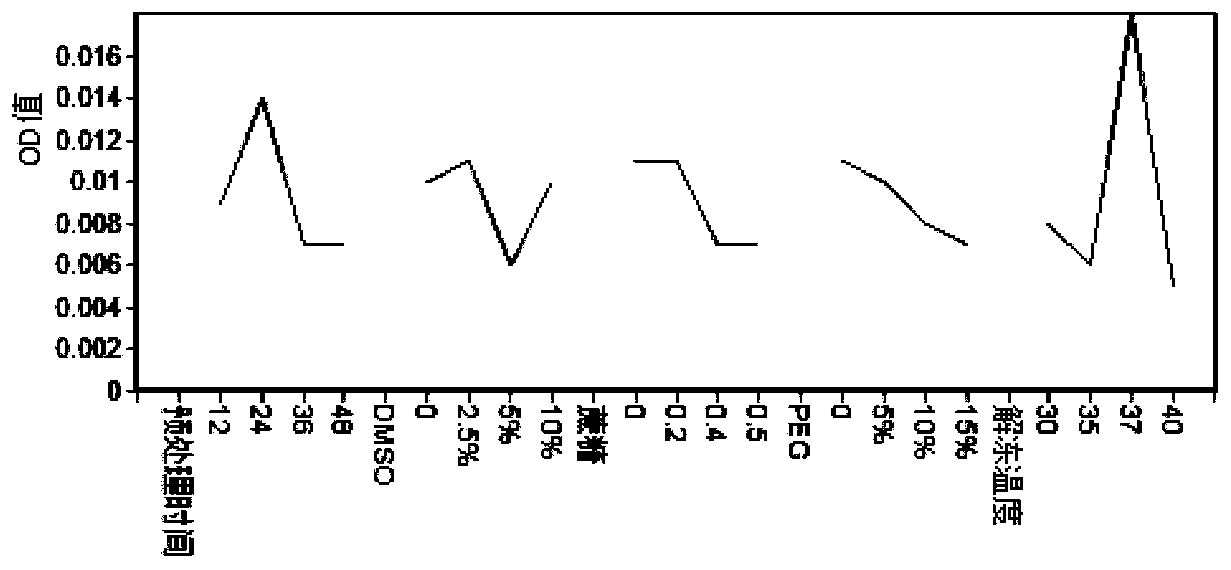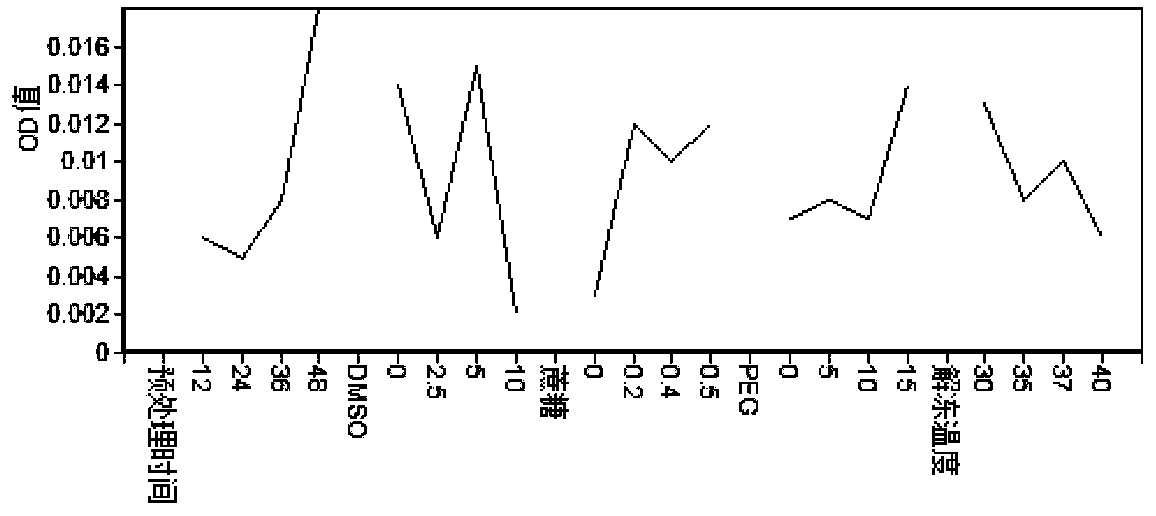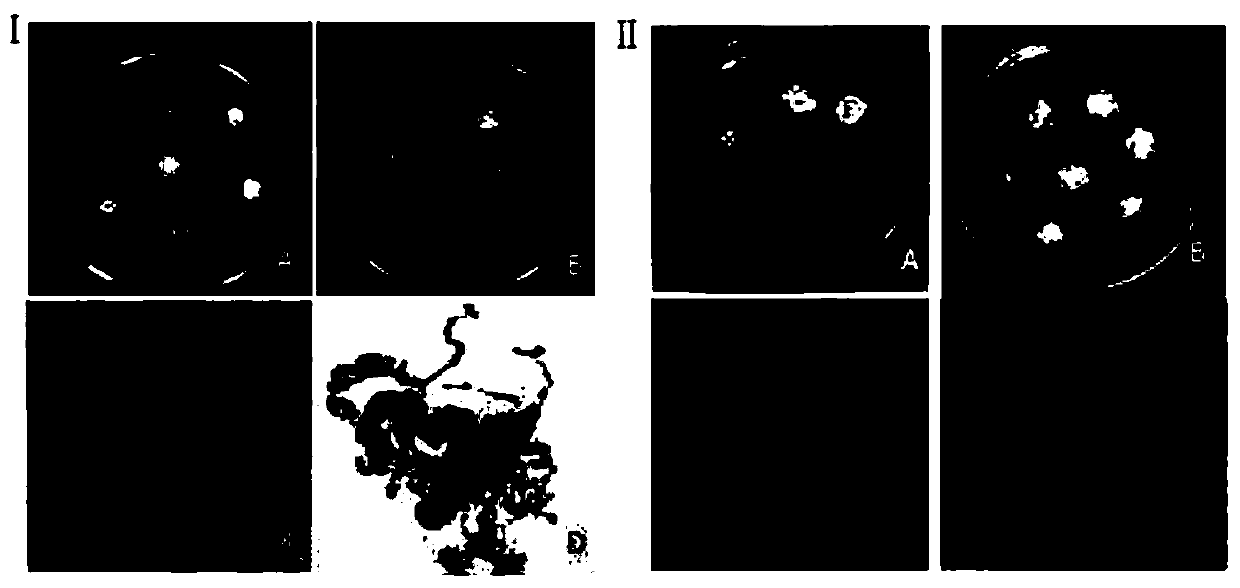Method for ultralow-temperature preservation of anti-bursaphelenchus-xylophilus pinus massoniana embryonic callus
A technology for cryopreservation of embryogenic callus, which is applied in horticultural methods, plant preservation, botanical equipment and methods, etc., can solve the problems of decreased embryogenicity, continuous accumulation of cytological changes, and genetic insufficiency of embryogenic callus. Stability and other issues
- Summary
- Abstract
- Description
- Claims
- Application Information
AI Technical Summary
Problems solved by technology
Method used
Image
Examples
Embodiment 1
[0025] Example 1 Effect of cryopreservation on cell activity of resistant Pine massoniana embryogenic callus
[0026] 1) Ultra-low temperature storage pretreatment
[0027] Take 0.5 g of resistant Pine massoniana callus that has propagated for 15 days, and place it in a proliferation medium (LP+1 mg / L2, 4-D+0.5 mg / L 6-BA+1 g / L inositol + 1g / L glutamine + 0.5g / L hydrolyzed casein + 6.24g / L agar) were pretreated for 12h, 24h, 36h, 48h respectively.
[0028] 2) cryopreservation
[0029] Place the pretreated embryogenic callus in a 1.8mL cryotube, add cryoprotectants of different proportions in Table 1 to the 1.8mL scale, tighten the lid and place it in a programmed cooling box, and put the cooling box Put it into a program cooling device for cooling treatment. After the temperature drops to 0°C, it is pre-cooled for 10 minutes, and then the temperature is lowered at a rate of 1°C / min. After the temperature drops to -80°C, it is maintained for 30 minutes. The freezing box is ta...
Embodiment 2
[0043] Embryogenic callus recovery growth assay after embodiment 2 cryopreservation
[0044] Thaw and wash the above-mentioned resistant Pine pine horse 7-6 and whole 172-1-1 embryogenic calli stored at cryopreservation for one month, and place them on the proliferation medium for recovery culture. Observe and count the status of embryogenic callus resuming growth, and place the resuming callus under a Zeiss stereo microscope to observe its microstructure.
[0045] The culture temperature is 23±2°C, and cultured in the dark. Proliferation medium is LP+1mg / L2, 4-D+0.5mg / L 6-BA+1g / L inositol+1g / L glutamine+0.5g / L hydrolyzed casein+6.24g / L agar.
[0046] Callus regrowth rate = number of recovery callus / number of thawed callus × 100%
[0047] Data analysis was processed by Excel 2007 and SPSS 19.0.
[0048] The results are shown in Table 4. The cryopreservation scheme was further screened by counting the callus regeneration rate and the time required for growth recovery. For...
Embodiment 3
[0054] Example 3 Observation on maturation and differentiation of embryogenic callus after cryopreservation
[0055] After the embryogenic callus of the thawed resistant Masson pine horse 7-6 cell line resumed growth, the thawed callus and the normal proliferating callus of the horse 7-6 cell line were placed on the maturation medium for differentiation Cultivate and observe callus differentiation ability.
[0056] The culture temperature is 23±2°C, and cultured in the dark. The maturation medium is LP+0.4mg / LABA+0.5mg / L GA+1g / L glutamine+1g / LAC+3.5g / L phytogel.
[0057] 1) Effects of cryopreservation on maturation of resistant pine embryogenic cells
[0058] Through mature culture, it was found that the normally proliferating callus had no obvious differentiation phenomenon on the mature medium, and the callus had been completely browned after 2 months of culture ( image 3 A). However, the thawed Ma 7-6 callus also had browning phenomenon after 2 months of mature culture...
PUM
 Login to View More
Login to View More Abstract
Description
Claims
Application Information
 Login to View More
Login to View More - R&D Engineer
- R&D Manager
- IP Professional
- Industry Leading Data Capabilities
- Powerful AI technology
- Patent DNA Extraction
Browse by: Latest US Patents, China's latest patents, Technical Efficacy Thesaurus, Application Domain, Technology Topic, Popular Technical Reports.
© 2024 PatSnap. All rights reserved.Legal|Privacy policy|Modern Slavery Act Transparency Statement|Sitemap|About US| Contact US: help@patsnap.com










